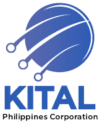Technology is empowering, whether you are an individual or an organization. The latter acquires a competitive edge with the right gadgets and devices. From better productivity to less laborious work, organizations benefit the most from technology. However, this scenario is only possible with proper planning.
Many organizations fail to realize that purchasing technology requires a well-thought-out strategy. Many don’t understand the value of standardizing their IT infrastructure. When the wrong practices persist, you risk creating problems for your organization in the long run. This, in turn, will result in setbacks that will cost you valuable time and money to remedy.
The Importance of Standardizing IT Infrastructure
The standardization of your IT infrastructure takes place in three areas: (1) user environments, (2) software development, and (3) database management systems. The end-goal of the entire process is to reduce complexities in your organization. When you continue to put off standardization, you eventually hinder your organization’s growth and development.
Problems with a Disparate IT Infrastructure
Most of the issues that come from a disparate IT infrastructure are related to cost and labor. With more – and different – equipment to adapt to or study, your IT team will spend more valuable time and money in maintaining your devices and systems in the workplace.
- You will face more security threats.
Disparate tools and systems make it harder for your IT team to manage, monitor, and troubleshoot problems. The inconsistencies in these areas result in a longer turnaround, increasing your risk of security threats—from unpatched software and hardware to cyber-attacks that target your database.
- You will experience more extended downtime.
Different systems make maintenance or repairs more difficult, leading to longer downtime. Rather than launch the troubleshooting process immediately, your IT team will have to identify the system and determine the appropriate solution. It creates a technology gap and a lag in operations, both of which are detrimental to your organization’s efficiency and productivity.
- You will spend more on updates.
Different devices and systems will cost more to upgrade and maintain. Your IT department will also face the difficulty of having to contact various vendors for solutions. Although you can include some of these in your yearly budget, you risk spending more on upfront costs when unexpected problems arise.
Advantages of a Standardized IT Infrastructure
Standardizing your IT infrastructure has several advantages, but most of them boil down to convenience and expertise. With a singular vendor, your IT team can master the devices and systems, allowing them to identify problems quickly and determine the necessary solutions in no time.
- You reduce IT-related costs.
When you have a single vendor, you lower acquisition costs and maintenance expenses. With a standardized IT infrastructure, your software and hardware follow the same life cycles. Vendors are also more agreeable to price negotiations when you procure equipment in large quantities.
- You improve IT management.
Your entire IT network is made up of different components that require specific solutions. By standardizing its infrastructure, you reduce maintenance problems (e.g., software patches, hardware upgrades, troubleshooting processes, etc.). Apart from this, a standardized infrastructure prevents mistakes caused by a lack of expertise.
- You enhance overall scalability.
As you expand your organization, your IT infrastructure will need to grow along with it. By standardizing your IT environment early on, you prevent problems like incompatible systems, which could become a major obstacle to growth. In addition, the calibration process gives you better insights on how to scale up. By identifying the software and hardware you will need in the future, you can better manage upfront costs.
Although it pays to understand the importance of having a standardized IT infrastructure, it’s also essential to identify the challenges organizations face when attempting to make the switch.
The Challenges of Standardizing IT Infrastructure
Organizations are often hesitant to adopt new technologies, even if these changes are beneficial to their operations. By understanding these challenges better, you can determine the appropriate solution for your organization.
Financial Restrictions
Small to mid-sized organizations are hesitant to standardize their IT infrastructure because they have limited resources. Technology isn’t cheap, but it is a low-risk investment that offers high returns. Additionally, you are more likely to spend money on a disparate IT infrastructure in the long-term.
Possible Solution: By analyzing your business needs and identifying how technology can address them, you can justify the additional expense. Early preparation for the standardization process allows you to calibrate your budget accordingly.
Lack of Technical Support
Implementing new systems and replacing existing hardware with more modern devices is no small undertaking.
Possible Solution: By providing your IT team with the necessary training, they are better equipped in addressing issues. They can better explain new systems and hardware to the rest of the organization. Some vendors provide seminars to help clients master the programs and equipment they acquired.
Workplace Disruptions
Organizations are hesitant to adopt new technology because it poses the risk of disrupting current processes.
- Less tech-savvy employees might struggle with using the new system, affecting their efficiency and productivity.
- Current processes might be reliant on legacy systems, creating unnecessary confusion as teams restrategize and adapt.
- The process of replacing hardware can take long and result in downtime that affects income-generating activities.
Possible Solution: By studying your current systems and hardware, you can prepare for the disruption that the new technology may create. It allows you to develop a strategy for the standardization process, preventing problems that aggravate the disruption.
How to Standardize Your IT Infrastructure
As mentioned, the end-goal of IT standardization is to improve efficiencies, enhance productivity, and reduce complexities. When you start this process, there are some things to keep in mind to prevent complications.
Plan Ahead
Get the necessary people involved in the process. Aside from your IT team, include different department heads and the finance team. Department heads have better insights into their respective teams’ needs, and the finance team can help develop a budget for the project. Planning also prepares the entire organization for the change, enabling them to make the necessary arrangements to prevent downtime.
Choose a Vendor
Once you’ve determined the hardware and software you need to standardize your IT infrastructure, you can start looking for the appropriate vendor.
- Choose a vendor with a wide range of business-class hardware (e.g., desktop computers and laptops).
- Choose a vendor that has reliable technical support services to prevent troubleshooting problems.
- Choose a vendor with the resources to meet your requirements; you don’t want to partner with a vendor who can’t fulfill your orders.
This step in the standardization process is essential to the success of the project. Since you will be entering a long-term relationship with the vendor, you must choose the right one for your organization.
Buy in Bulk
Based on your business growth plans, identify how many devices you will need to purchase. Apart from your existing employees, you should consider purchasing additional hardware. This provides you with an inventory in case an employee needs a temporary replacement. It makes sure every new hire has the hardware they need to start working.
Why Choose Dell for Your IT Infrastructure
These days, several brands provide different kinds of technological solutions. But not all of them provide business-class hardware and systems. Simply choosing the most popular or priciest brand will lead to complications in the long-term, especially if they can’t keep up with your operational needs.
It’s typical to see Dell products in workplaces worldwide, from the Philippines to the United States. The brand is one of the leading names in business-class devices. Discover why organizations, from small startups to large enterprises, choose to use this brand in standardizing their IT infrastructure.
Exceptional Security
Dell provides exceptional security for all of its products. The brand offers the following by way of digital protection:
- Comprehensive encryption
- Malware prevention
- Advanced authentication
The Dell Data Protection | Encryption feature offers a single-suite solution that protects all hardware data, including external media, cloud storage, and self-encrypting devices. Prevent data breaches, cyber-attacks, and other security threats that can impede your business growth.
Better Manageability
Dell has become a leading name in business-class technology solutions because of its products’ manageability. The brand’s focus on user experience has made its products advantageous in organizations. Standardizing your IT infrastructure with Dell products will help you reduce your staff’s learning gap, allowing you to deploy new technologies without creating too much downtime in operations.
Improved Reliability
Dell makes sure its range of business-class devices is equipped to meet the operational needs of your organization. Each product goes through a rigorous testing phase, including a drop test, to make sure they meet the brand’s durability standards. Dell hardware is also known for being spill-proof. Rest assured that your operations won’t be slowed down because of faulty hardware.
Unparalleled Support
Dell has maintained its popularity for providing unparalleled support to its clients. Your IT team receives the help they need to make sure your organization runs smoothly and efficiently. Choose from the brand’s database of resources (e.g., product specs, brochures, etc.) that you can access to learn more about each product.
What You Get with Dell Beyond the Technology
The brand is known for establishing strong and lasting relationships with its clients. Discover how it accomplishes this by learning about the services they provide beyond the technology.
They are social listeners.
Dell proactively monitors what people say about them online. The brand analyzes all issues brought up through its customer support channels. Dell uses these insights for its R&D benefits, specifically how it can improve user experience through its products. It has helped increase customer loyalty, allowing Dell to compete with more popular high-end brands.
They create brand advocates.
Aside from being a proactive social listener, Dell is known for making brand advocates out of its clients. One of the brand’s top initiatives is to build lasting relationships with its audience. Dell understands that word-of-mouth marketing is still highly effective, even in the digital landscape. It nurtures its relationships with clients, often identifying which ones are suited to be converted into brand advocates.
They are continually innovating.
Like other brands, Dell continues to innovate to provide clients with high-performance devices that meet their needs. Its R&D team identifies common pain points in customer concerns and addresses these through updates or new products. By choosing Dell for your organization’s tech needs, you acquire a partner whose range of innovations will grow with you.
They have an active community.
As mentioned, Dell is highly active online. The same goes for its audience, especially its brand advocates. The brand understands the value of community in technology. Expect to see Dell employees actively engage with existing and potential clients through its social media channels. This practice helps the brand build a strong foundation for its customer relationships.
Kital: Your Partner in Standardizing Your IT Infrastructure
Empower your organization with a state-of-the-art IT infrastructure. Start the standardization process by replacing mismatched hardware with devices from Dell. Taking on this project early on will prevent major disruptions to your operations. Additionally, it allows you to sync the new equipment’s life cycle with the other changes you’ll be taking on.
For over three decades, the Kital Group has provided organizations throughout the Philippines with exceptional tech solutions. We understand the need for a standardized IT infrastructure. Our partnership with Dell has provided us with a full suite of solutions, including its range of business-class hardware.
If you are looking for versatile and robust devices, we are the company to call. Kital is your partner in empowering and future-proofing your organization. Get in touch with us to find out how to equip your organization with the latest Dell products.




